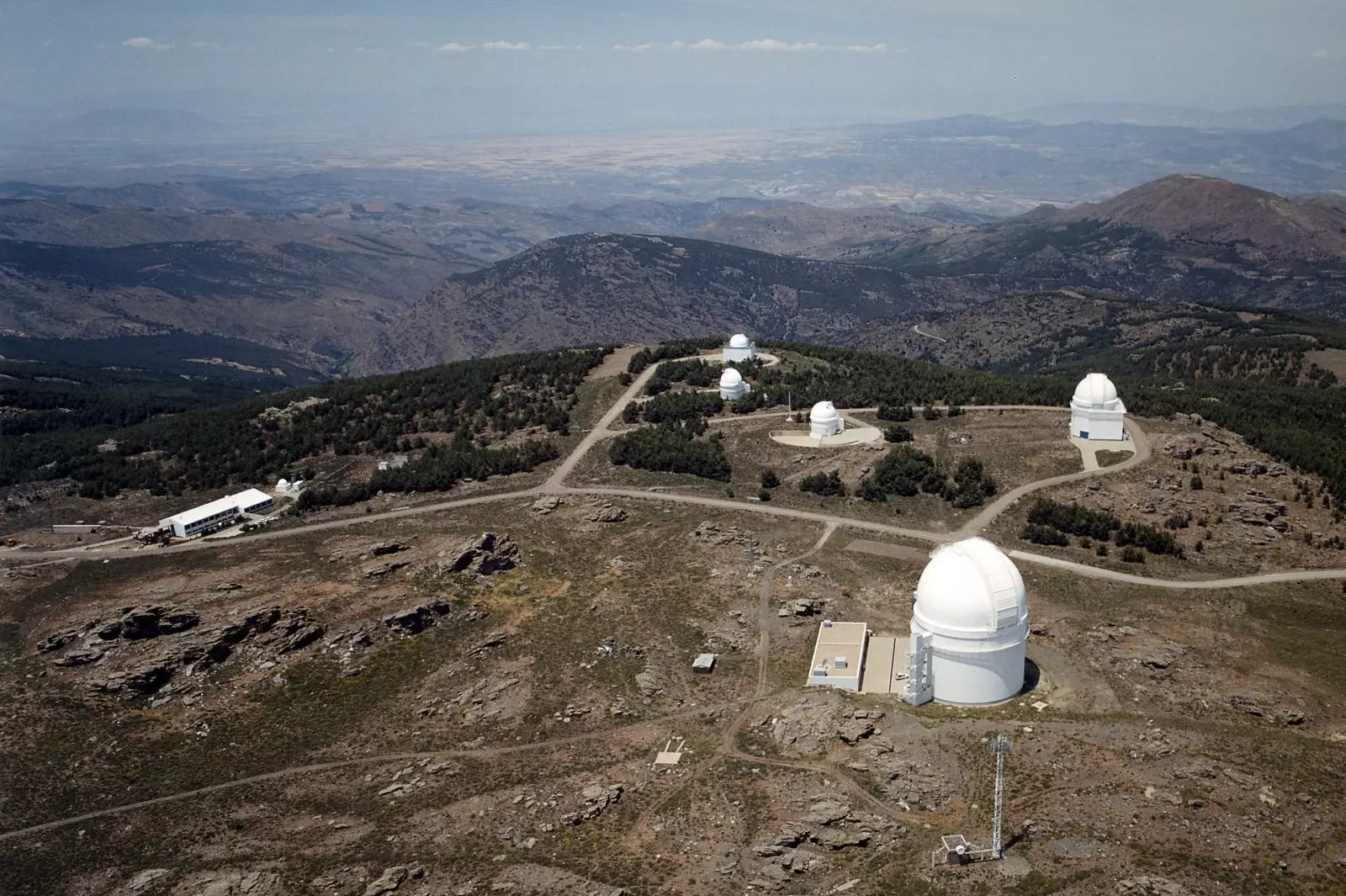
The Hispanic Astronomical Center in Andalusia occupies a plateau at almost 2,200 meters above sea level.
Actors of the stature of the recently mourned Sean Connery, the beautiful Brigitte Bardot or an unknown, but already tough-guy-looking, Clint Eastwood: “Almería is a box of surprises”. It was the 60s and 70s of the last century, when Almería ceased to be an unknown and small provincial Spanish city to become a gigantic movie set through which great celluloid stars came and went, both international and national, mingling with the curious and local people who found a kind of panacea by being able to work as extras, specialists, plumbers, electricians, horse trainers, etc.
A boom of stars. Something like this happens in the spectacular facilities of the CAHA, located in Calar Alto, a flat land with a lunar aspect that is found on the heights of the Sierra de Filabres.
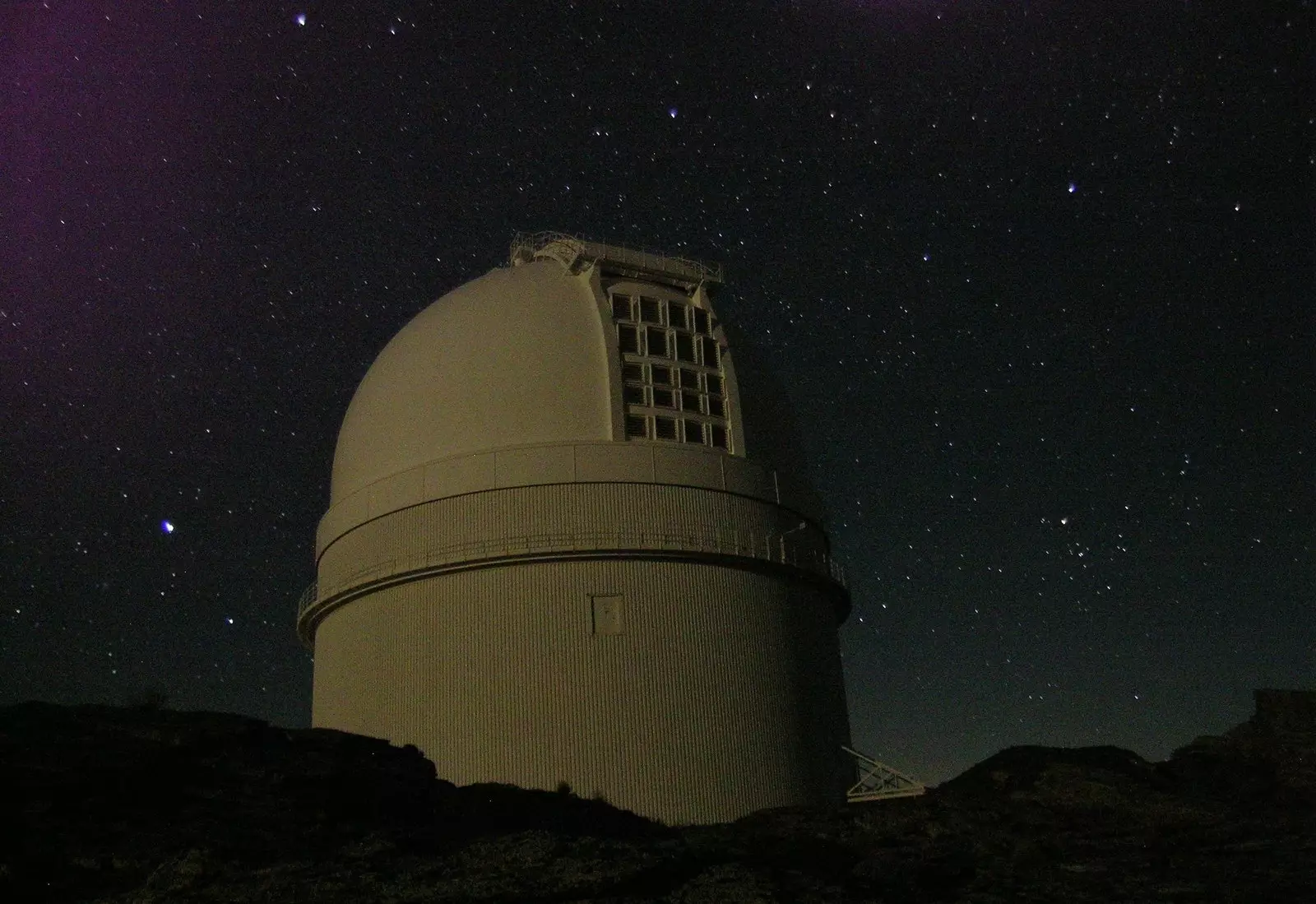
The starry sky over the CAHA, Almería.
CALAR ALTO: WELCOME TO THE MOON STATION ON EARTH
Going up with the bus to the 2,168 meters of Calar Alto, the vegetation varies considerably. Soon, we have gone from the arid desert of Almeria to the pine forests that appear between 1,300 and almost 2,000 meters above sea level. Suddenly, shortly before I begin to see the structures that contain the giant telescopes, the pines are becoming scarcer by leaps and bounds and, on both sides of the road, the majority are small bushes in the shape of large mushrooms and lichens that cling to the gray rocks.
The almost absolute silence the buildings that make up the CAHA do nothing more than reaffirm that strange feeling of being in a place far away from Earth. Perhaps more typical of that Moon that controls our tides, and listens impassively to our most yearning nightly dreams.
The towers of the telescopes reflect the blinding light of a Sun that already reigns in a totally clear sky. It is those skies of such high quality that they made Calar Alto the ideal place to establish an astronomical observatory.
Next to the towers are the houses of the scientists, the small “hotel” (which houses the common areas and rooms for visitors), laboratories, libraries and other scientific areas. The set resembles a lunar or Martian station. Well, Mars shouldn't be, because the earth isn't red and we don't see Matt Damon trying to plant potatoes. Of course, the cold is really intense at that early time of day.
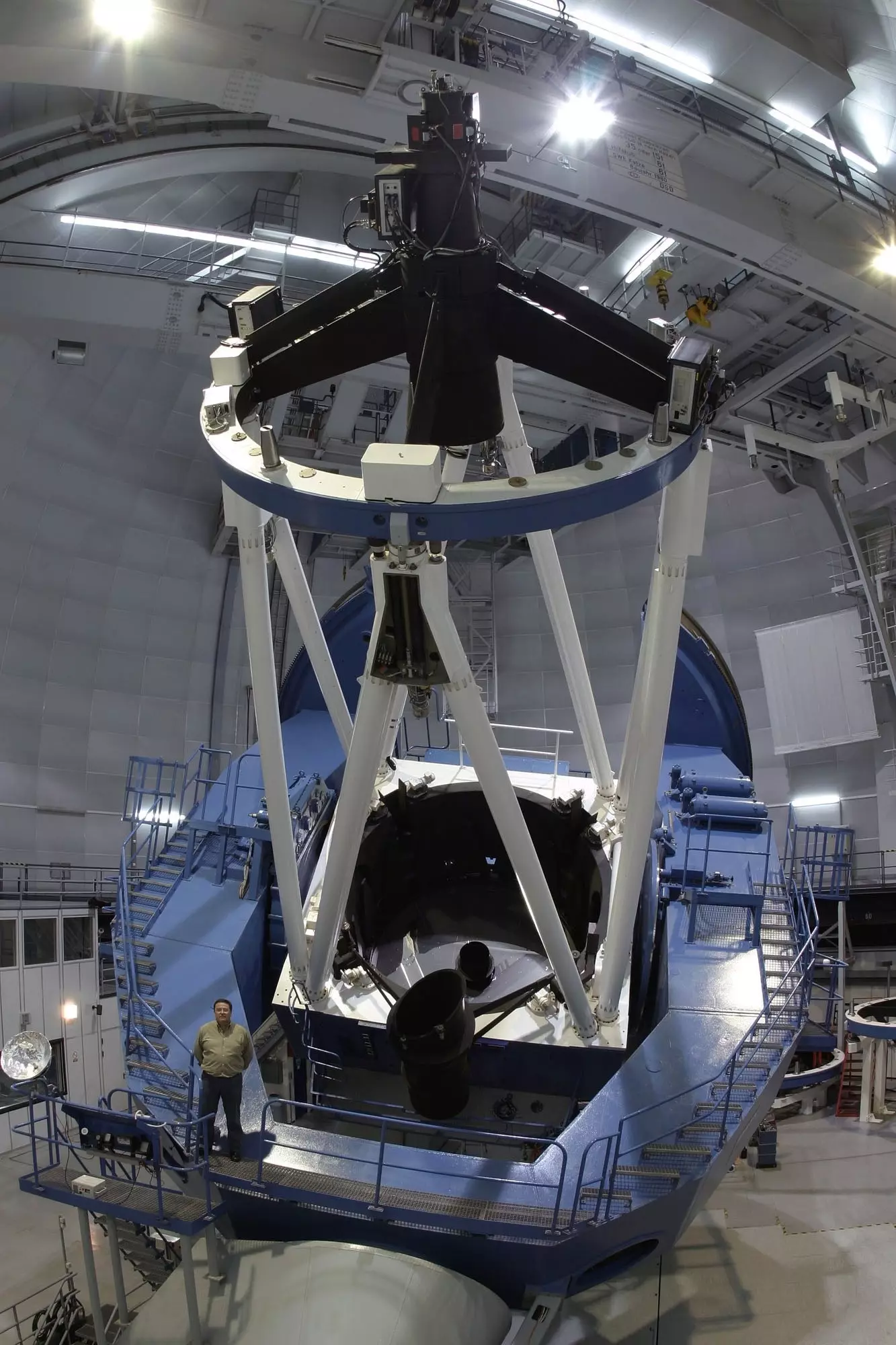
One of the gigantic telescopes of Calar Alto.
AN OBSERVATORY ONE HUNDRED PERCENT SPANISH
It was like that, quite frozen, that Javier, the magnificent guide and astronomer from the Azimuth company, found me that morning and showed me that astronomy was not a job for him, but a passion.
As we walked towards the largest of the complex's telescopes – a behemoth with a main mirror 3.5 meters in diameter – Javier told me that The observatory was founded in 1973 following an agreement between the Spanish and German governments.
At that time, German scientists from the Max Planck Institute for Astronomy were scouring the globe in search of places whose location and skies were perfect to be able to implant the powerful observation telescopes. This is how they discovered Calar Alto.
Until 2005, the facilities were used practically only by German scientists, sharing their use equally with the Spanish from that moment on. Nevertheless, since 2019 the Calar Alto Observatory is completely Spanish, after the signing of an agreement between the CSIC (Higher Council for Scientific Research) and the Junta de Andalucía.
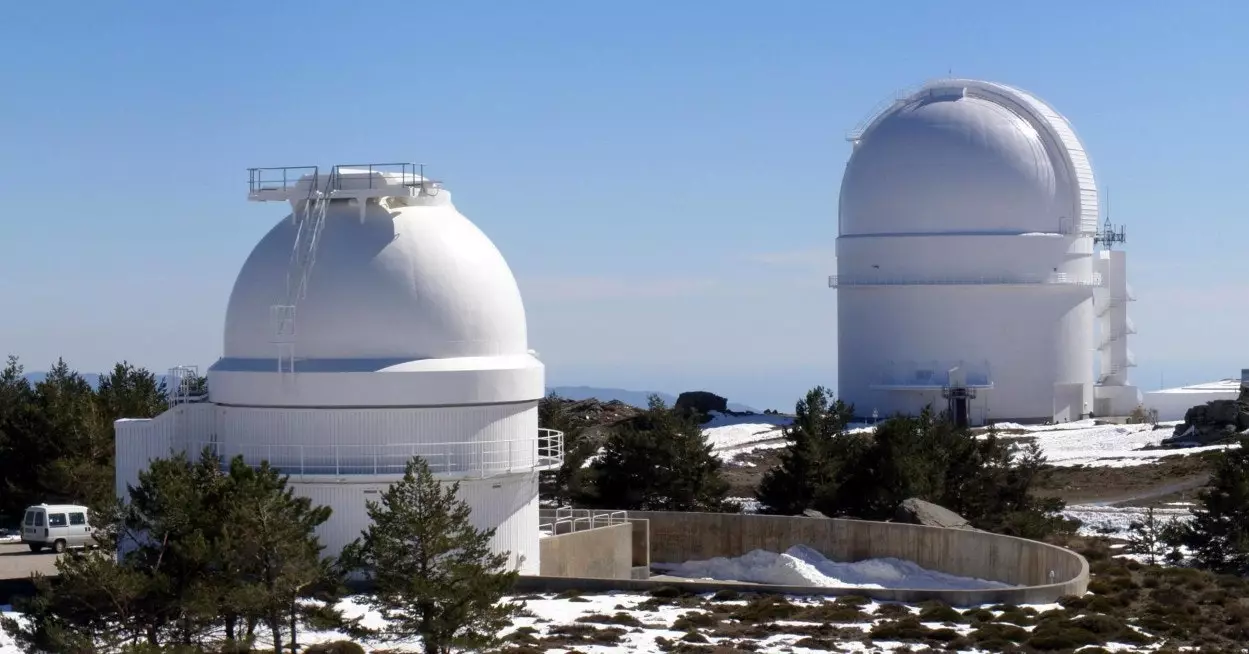
Since 2019, the Calar Alto Observatory is completely Spanish.
OBSERVATORY AT NIGHT… AND ALSO BY DAY
Although my visit to the CAHA took place during the day, night visits are also organized. Yes, it is true that for our poor human eye to be able to enjoy the beauty that stars, planets, comets, asteroids or meteors give us, we need the darkness of the night to stain our sky, but visiting the observatory during the day gives the opportunity to get to know the facilities in first person, something that is not allowed during night visits, since the telescopes are in operation.
Nevertheless, Those experiences after sunset don't consist of lying on a blanket and looking up at the sky. while the experts explain the constellations and the listeners pray to see a shooting star (which, by the way, are not stars that move, but small meteors, millimeters or centimeters in size, that when entering the earth's atmosphere at high speed combust by friction) without falling into the freeze, but you have the possibility of admire, with some depth and detail, the spectacular sky of Calar Alto with portable telescopes of a certain power.
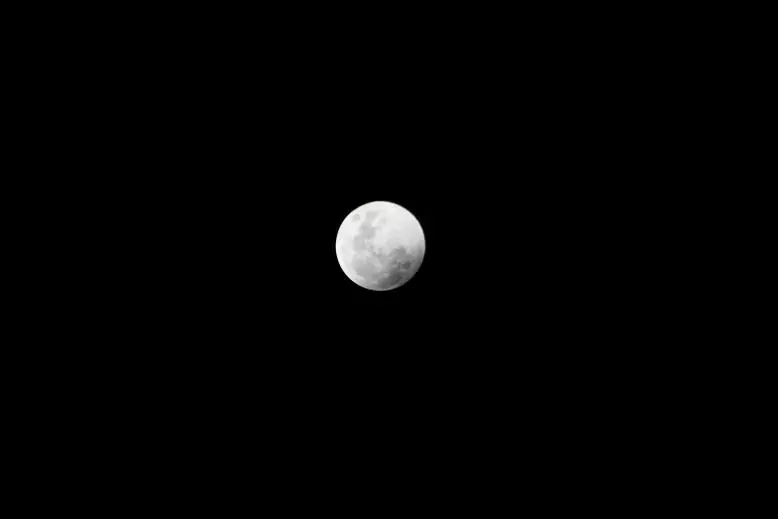
Lunar eclipse captured by the Hispanic Astronomical Center in Andalusia, Almería.
Having had, the night before, a magnificent similar experience in the surroundings of the Granada Sierra de Baza, the daytime visit seemed most interesting to me.
It is shocking to enter the complex structure, 43 meters high, which houses the large 3.5-meter telescope. It is cold inside, because for the correct operation of the device, the temperature that will be reached during the night must be replicated at all times. Although the lens doesn't seem that huge, the structure on which it is mounted is. and that allows you to turn and aim at the sky. The dome is also impressive.
This telescope was inaugurated in 1984 and mainly used to search for extrasolar planets (planets orbiting stars other than the Sun) from our environment.
In Calar Alto there are other somewhat smaller telescopes. The 2.2 meter one, from 1979, is used to study active galaxies that have massive black holes that absorb large amounts of material.
The 1.23 meter telescope is the dean of the complex. Installed in 1975, it is used to study the stars and ** learn about some planets from other solar systems. ** However, the best thing about the "grandfather" of Calar Alto is that, sometimes they allow tourists to look through their lens, being the only professional telescope of this size that is used in Europe for tourist activities of this type.
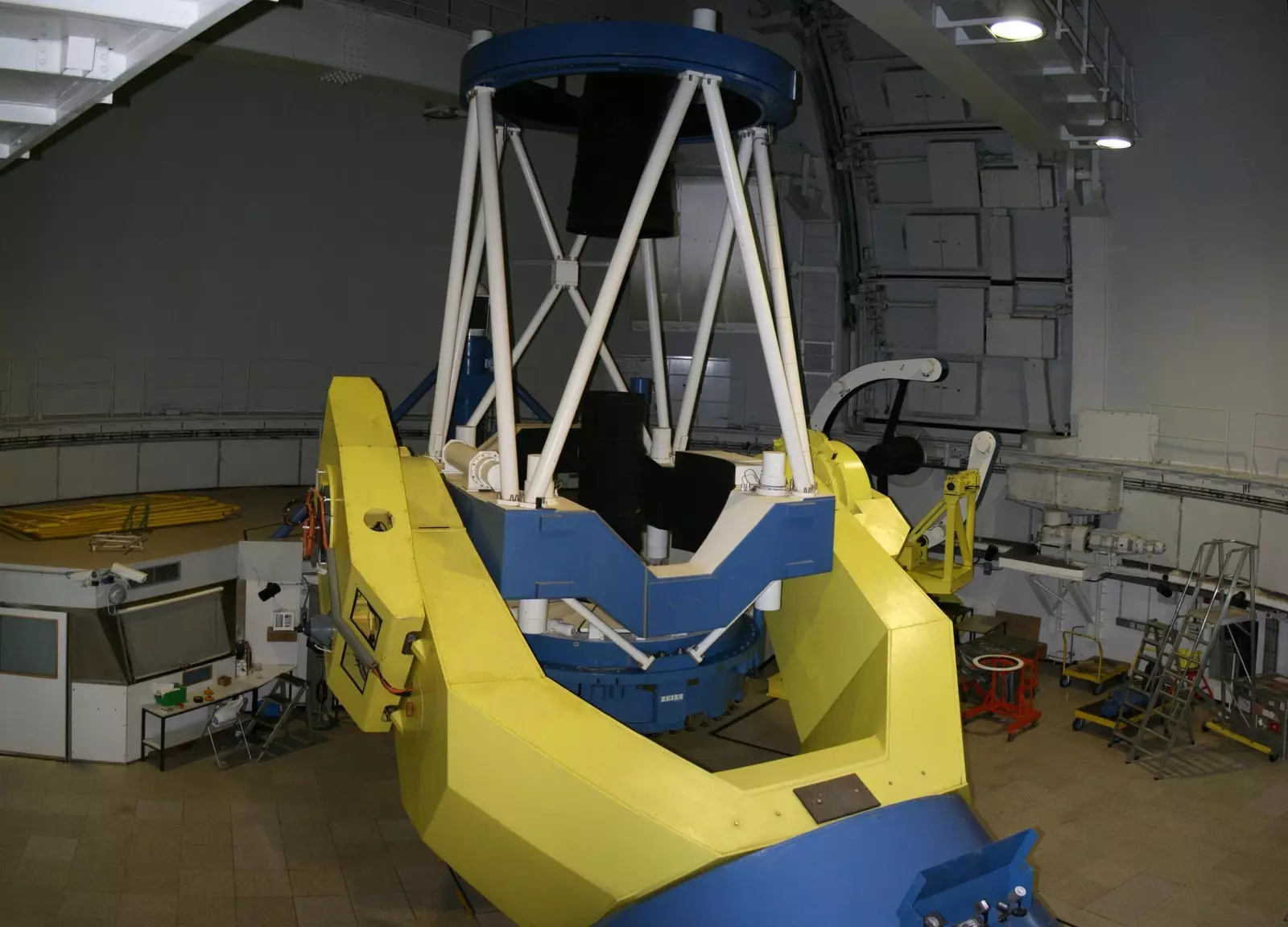
Telescope with an aperture of 2.2 m in Calar Alto, Almería.
And it is that, contrary to what most imagine, the romantic image of the astronomer observing through the lens of his telescope has long since come to an end (only in the field of large observatories). Now, the data and images are analyzed in a telescope control room, with the help of powerful computers that ostensibly improve the capacity of the human eye.
Perhaps, if Galileo Galilei raised his head, he would feel a little disappointed when he found out about this change, but surely it would take him very little time to be seduced by this wonderful possibility of penetrating this fascinating universe how small it makes us feel.
In the near future, the old houses of astronomers that are no longer used could be converted into tourist accommodation, thus being able to spend a full weekend (hiking and cycling are other activities that take place in the area) in this kind of lunar station that allows you to dream with your feet on the ground.
Address: Compl. Calar Alto Astronomical Observatory, s/n, Sierra de los Filabres, 04550, Gergal (Almería) See map
Telephone: +34 950 63 25 00
